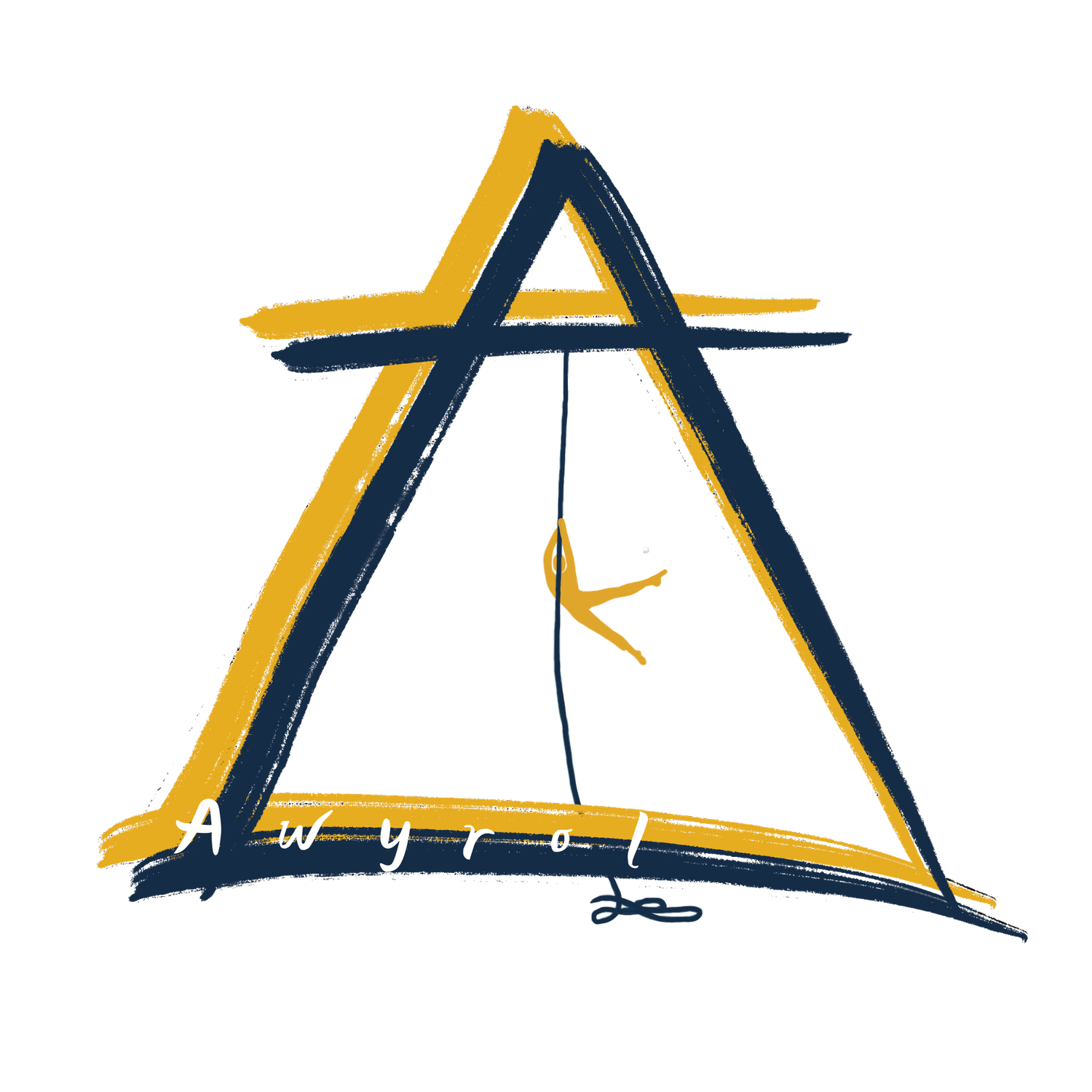Injuries & emotions
On normalising injury talk, practicing self-compassion & building an “injury coping kit”
This isn’t the blog post I’d originally started writing this month. (That one’s about goal-setting for training efficiency and confidence - coming later this spring!) Because I got injured. I got injured! I got injured. I got injured. There, I said it. And I thought I should talk a bit more about it.
I find talking about injuries really difficult. Why? Let me count the ways…
Because I worry that in admitting to the wider world that I’m injured, people will think that I’m not a safe or competent aerialist or worse, not a good coach. (Because obviously aerial coaches have to be completely infallible and indestructible, right? Writing this, I realise that notion is about as nonsensical as not respecting your doctor because they once had a cold.)
Because I worry that it’s going to signal the end of my ability to train and teach, and I find that so hard to come to terms with that I can’t bring myself to vocalise it. (I know that catastrophising isn’t helpful, but having once had a prognosis of permanent disability - albeit that didn’t happen… yet - I’m naturally a little sensitive about it.)
Because I think some people will assume it’s a reflection on my age (again this is a whole other blog subject in itself.)
Because I think, on some subconscious level, injuries feel at odds with my (unhealthy) tendency towards perfectionism: as if injuring oneself is to be very obviously ‘not perfect’. (I don’t think or believe this on any conscious level; rather it’s a worrying example of internalised ableism, which is especially weird for someone with an autoimmune condition which causes intermittent disability, who’s had a career in inclusive practice. You can also expect musings on perfectionism and ableism in future blogs. Meanwhile some wise words on perfectionism from aerial hoop coach Brit Crumpton here.)
And because I nearly always think I’m somehow to blame. That I didn’t do enough or ‘the right’ PT exercises/prehab/warm up/cool down. Or that I did too much (overtraining).
Sometimes this last one is definitely true. I know I sometimes have a tendency to overtrain. I know I sometimes get carried away with overenthusiasm, go down skill rabbitholes that extend well beyond the careful set/rep limits devised by my coach and then end up training to failure, which I know is not great for my body. I know I sometimes don’t cool down as thoroughly as I might. But on the whole, I’m very careful with my PT, warm-ups, sleep, nutrition and training schedule, which is why I get positively offended by injuries.
But - and this is a big but - there is most definitely a balance between taking responsibility for our health/bodies/practice which allows us to play an active role in our wellness and healing, and then blaming ourselves when things go wrong.
“There’s a balance between taking responsibility for our health and blaming ourselves when things go wrong.”
Because when we train athletic skills at a certain level, injuries happen. They. Just. Happen. To make gains, we are by definition working at and expanding the very edges of our strength/skill/flexibility/endurance (delete as appropriate to your current goals). I find it helpful to think about professional footballers or other sports athletes who still sustain injuries in spite of their vast teams of support practitioners, PT, nutrition and training regimes. I make no judgement about their ability or professionalism and continue to respect their commitment to their discipline. So why would I judge myself so harshly or fear the judgment of others?
“if we accept that injuries happen, how do we get better at coping with how we feel about them? “
So if we accept that injuries happen to aerialists and circus performers, how do we get better at coping with how we feel about them? I’ve been using this injury recovery time to design a little future pledge to myself. I’ve saved it in my Notes app as ‘Injury Coping Kit’. I wish I’d done this sooner and I hope someone else might find it useful:
These are just mine - what would be on your list and in your toolkit?
Reference and resources
As a former academic, I’m still fairly obsessed with the importance of referencing other peoples’ work.
Last weekend I was a participant at the Dissecting Aerial symposium (I thoroughly recommend this amazing annual event which is also live-streamed - an incredible lineup of speakers and presentations both theory and practice) and Jess Abouzeid gave a great presentation based on her MSc research into how circus artists deal with the fear and anxiety post-injury. She gave some really good, practical recommendations some of which I’ve incorporated into my toolkit above. I don’t have any links to her own published research but definitely keep your eye out for any online talks she may be giving or on her website (she’s not on social media at the moment.)
The amazing PT and aerialist Emily Scherb @thecircusdoc - who does so much to champion ‘circus literate’ healthcare for circus artists - has a great blog including many on the subject of injury. This one is about why we absolutely need to admit we have injuries and seek healthcare. (Don’t be confused by the title - I was, initially! The article is not about getting an injury being ‘abnormal’, rather it’s about why we should not continue training through the pain of injury.) And this one is about tips for injury prevention.
And if you enjoy reading academic research, some recent references on the experience and psychology of injury are here:
Cayrol T, Godfrey E, Draper-Rodi J, Bearne L. Exploring Professional Circus Artists’ Experience of Performance-Related Injury and Management: A Qualitative Study. Med Probl Perform Art. Mar 2019;34(1):14-24. doi:10.21091/mppa.2019.1004
Shrier I, Hallé M, Psychological predictors of injuries in circus artists: an exploratory study British Journal of Sports Medicine 2011;45:433-436.

